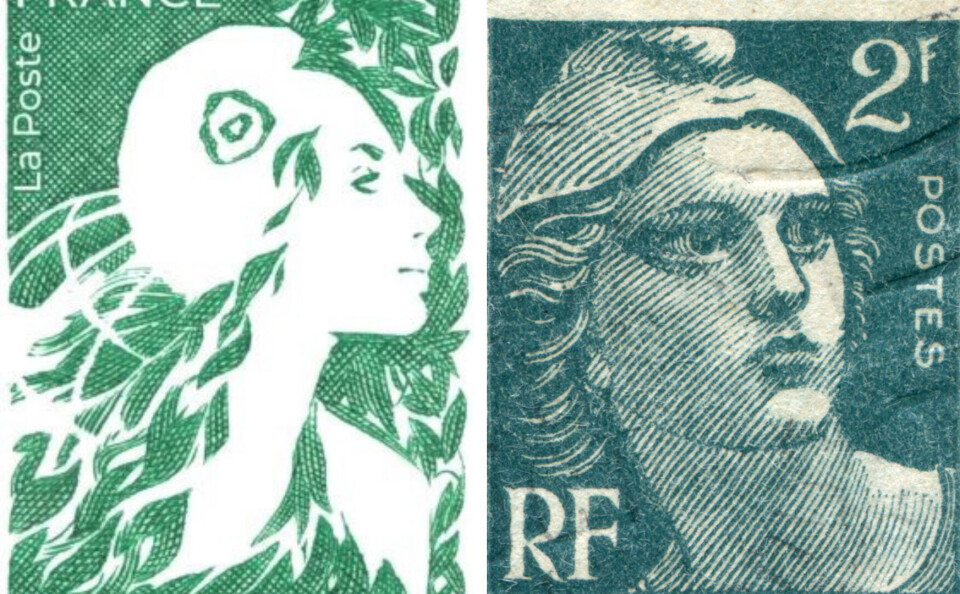-
‘Radiator road’ that never freezes tested in France
But high costs could prove barrier to other towns installing the technology
-
France ranks second in EU for gender equality
The new index tracks eight key areas to ‘compare how inequalities affect our lives’
-
Medicines to avoid in 2026 list published by French medical review
The 108 medicines are considered to pose risks that outweigh the benefits
New Marianne for stamps in France unveiled in Dordogne
The president typically oversees the remodelling of the national symbol

The remodelled Marianne to be used on French stamps has been unveiled by President Macron on a visit to the La Poste’s stamp printing works in Boulazac, Dordogne.
The new stamps will go on sale on November 13.
French presidents traditionally oversee the remodelling of Marianne to align with the national spirit and some aspect of public policy.
The new Marianne, called Marianne de l’avenir, or ‘Marianne of the future,’ designed by artist Olivier Balez, features her now pensive face turned up and to the right, with a motif of leaves blending with her flowing hair.
Dessinée par l’artiste Angoumoisin Olivier Balez, qui présente ici son œuvre, la « Marianne de l'Avenir » sera mise en vente dès le 13 novembre. pic.twitter.com/CPowGkCaYN
— SO_Dordogne (@SO_Dordogne) November 7, 2023
“Several criteria led to this choice, in particular the ability of this image to evoke a return to the fundamental values of the Republic, opening up to the world and the importance of ecological transition,” announced the Elysée in a press release.
A jury of 60 young people doing their voluntary national service selected the new stamp from 15 preselected models.
"This Marianne is a sign of the times and a call to always follow-up on our commitments to the French people and our social and economic partners while working towards ecological transition and ensuring public service,” said Philippe Wahl, CEO of La Poste.
This new Marianne stamp is President Macron’s second. His first Marianne, known as ‘l’éngagée’, or ‘the engaged’, was unveiled in 2018:
Dévoilement en cours de Marianne l’engagée.... pic.twitter.com/nw0m8uObeA
— S. Bastide-Bernardin (@Sophie_2Leko) July 19, 2018
President Macron’s ‘Marianne the engaged’ replaced the gentle and left-looking Marianne of President Hollande:
Le président François Hollande vient de dévoiler le nouveau timbre #Marianne. Découvrez le sur http://t.co/AUAu2lQutw pic.twitter.com/xv06ADn9f4
— Élysée (@Elysee) July 14, 2013
Who is Marianne?
Marianne is the symbol of the French Republic. She is usually depicted as an indomitable young woman wearing a phrygian cap.
The character dates to the French revolution in 1792, drawing her name either from the Spanish natural philosopher Juan de Mariana or from a disparaging term (‘Marie’ and ‘Anne’) used by aristocrats to dismiss the revolutionaries as common girls.
Marianne has come to represent both the Republic and the Declaration of the Rights of Man and has an ambiguous position as both a symbol of government and of revolution.
Marianne through the years:

Marianne is frequently tasked with embodying some aspect of the current president’s policy.
Sometimes this can be read on her face, such as the combative 1945 Marianne - a far cry from 1932’s pacifist Marianne - or the decidedly modern 1982 Marianne, who abandoned her phrygian cap.
When France elected the left-wing François Mitterrand as President in 1981, Marianne’s head turned to the left. Similarly, she became an ecologist in 2005 and saw the stars of the European Union in 2008.
Can I still use old stamps?
Yes. In fact, all stamps purchased in France remain valid regardless of changes to the image on them or their price, so long as they do not have a monetary value printed on them.
Very old stamps may have a value in euros printed on them. You can still use these stamps, but may have to buy a timbre de complément (complementary stamp) in order to match the value of current postal costs.
Read more:
Slow uptake for La Poste’s new digital stamps in France
French postal workers can scan priority letters for you at your home
























